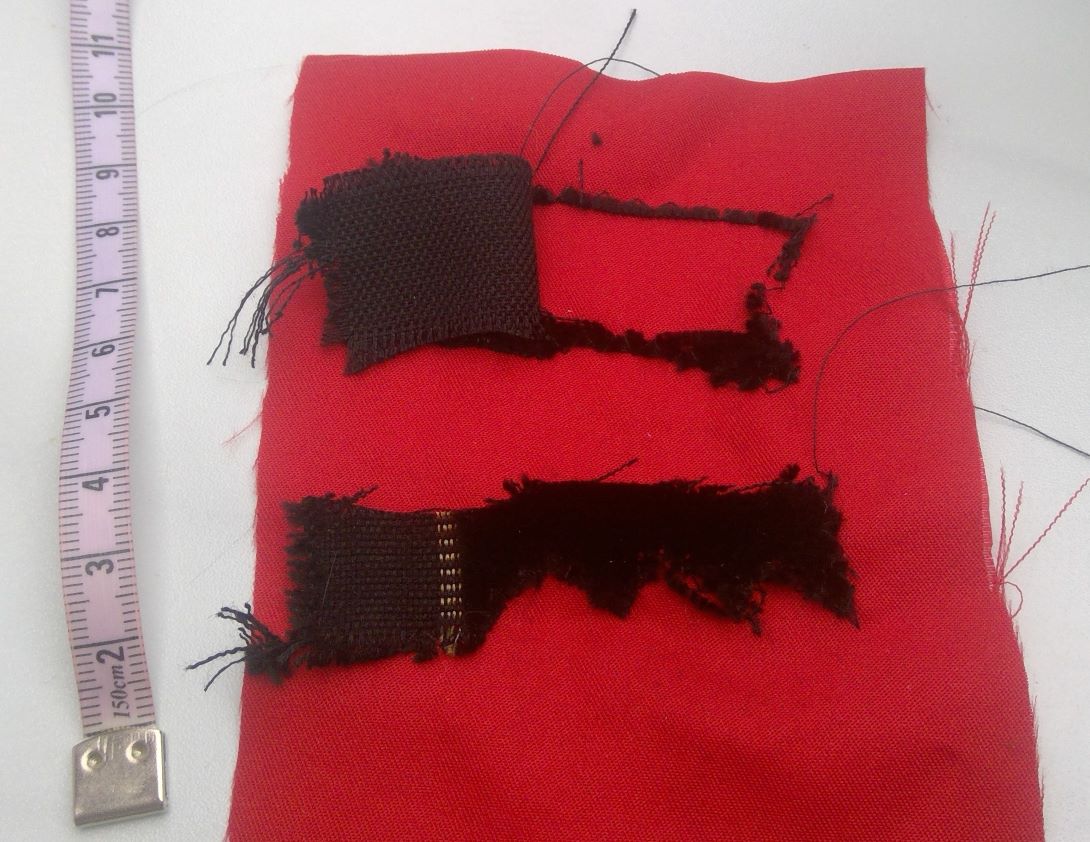I want to recreate a certain type of costume:

Image source and copyright: Heimatmuseum Dahme
My specific problem is that the black stripes on the skirt are supposed to be velvet. As far as I know there could be beads and braids involved, but the material for the main stripes always has to be velvet.
The skirt in the example has very faint vertical stripes, which are also visible in the areas of the velvet decoration, so they are cutouts in the velvet instead of inserts of fabric. In some stripes quite clear that a wide strip of velvet was cut into 2 halves with a wavy or zig-zag cut in the middle and both halves were sewn a distant apart. I thought about building the patterns from narrow velvet ribbons, but that doesn't work with the many wavy or zig-zag lines.
I've read that velvet frays a lot and sheds fibers when it's cut. So how is it possible to create such intricate designs as seen here, especially the elongated hexagons? Can I buy a yard of tightly woven cotton velvet (about 450 g / m2) and cut zigzags and waves like that without it disintegrating? Or how do I need to pre-treat velvet in order to have it not fray?
My velvet arrived and just for completeness I want to post the result of my quick-and-dirty test swatch:
This is untreated cotton velvet (ca. 350 g/m2) and from the left to the golden stripe is the salvage edge. It's sewn onto the fabric with a narrow (ca. 5 mm) zig-zag stitch, but all of the cut edges fray and shed velvet fluff like crazy. I can rip the velvet from the fabric with little force (see upper strip, the black outline is the few threads that are still sewn onto the fabric) and I suspect it would look similar after being washed. The zig-zag cut of the lower strip is still attached to the fabric, but it's already so frayed that you can see the red fabric through all the holes. Velvet definitely needs some kind of treatment on the back of the fabric to hold the threads in place.

